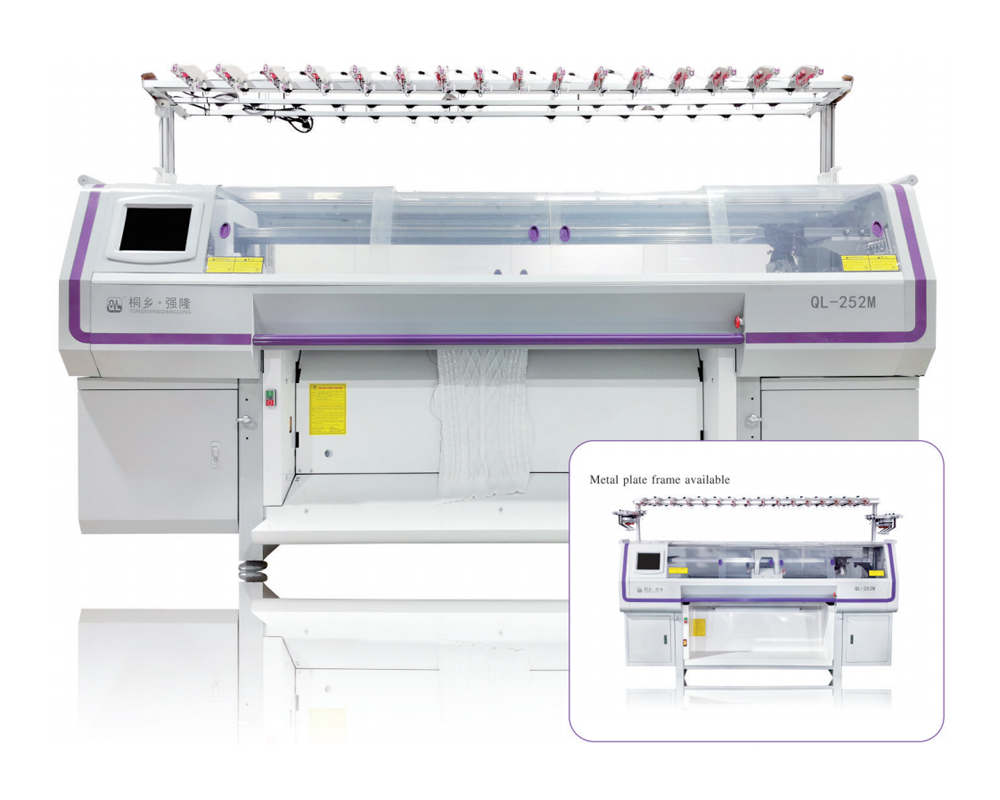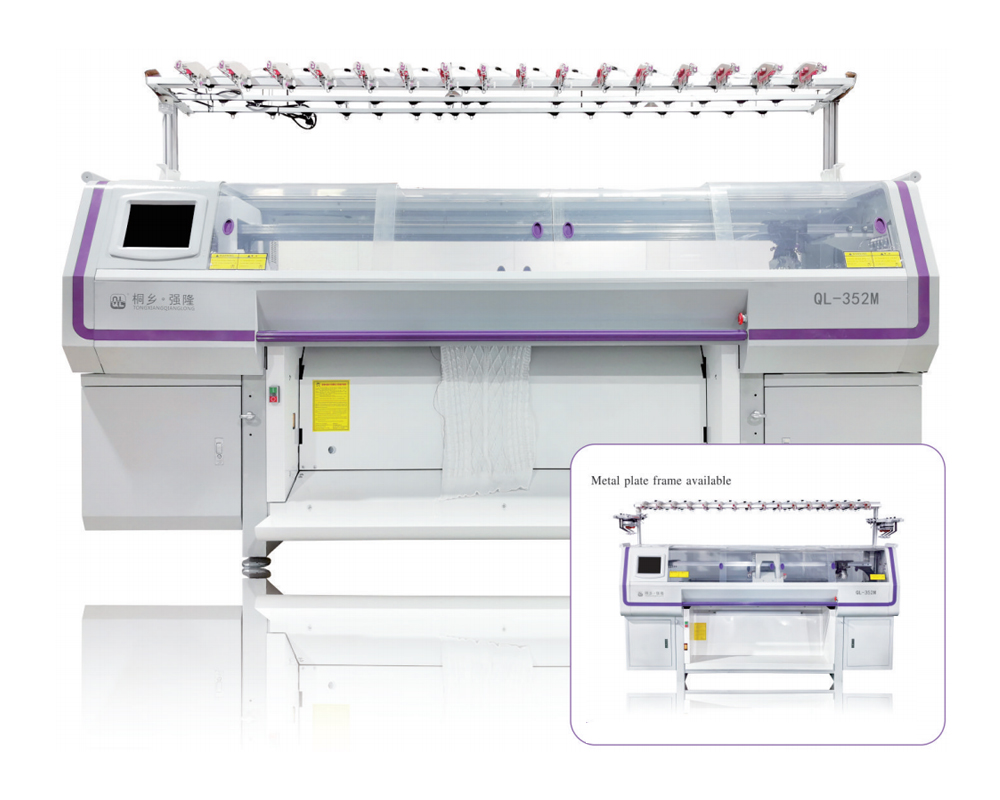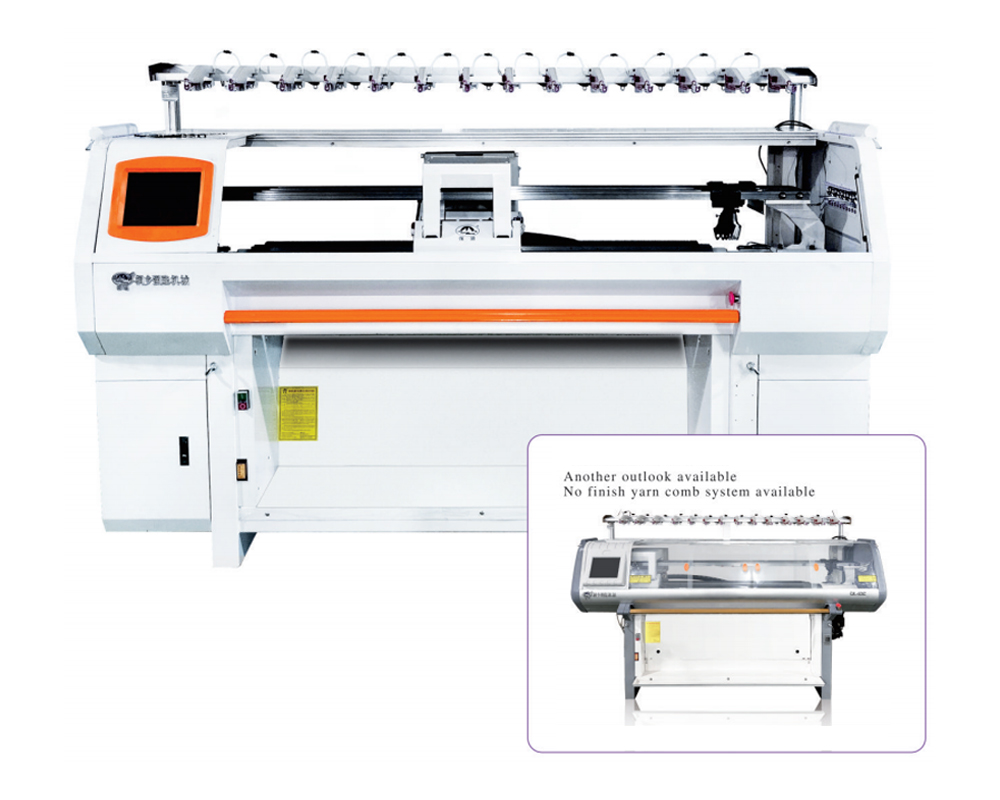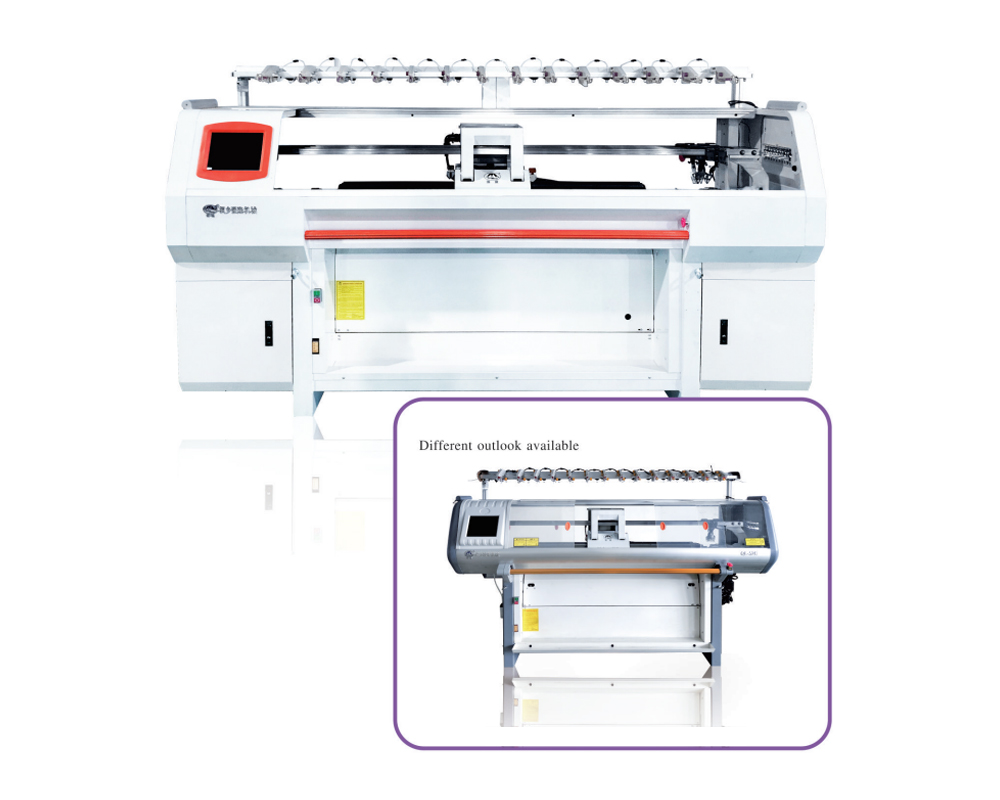Tongxiang Qianglong Machinery Co., Ltd. is high-tech China wholesale computerized flat knitting machine manufacturers, specialized in designing, developing, and manufacturing Knitting Machinery..
Computerized knitting machines are essential tools in modern textile production. They combine the intricate art of knitting with the precision and speed of automation, offering increased productivity and the ability to create complex patterns with ease. However, to ensure that these machines operate smoothly and efficiently, regular maintenance is necessary. Proper maintenance not only extends the life of the machine but also prevents costly downtime and ensures high-quality output.
This article will delve into the maintenance requirements for computerized knitting machines, covering the key areas of care, common issues, and best practices for keeping the equipment in optimal working condition.
1. Regular Cleaning
One of the simplest yet most effective maintenance practices for computerized knitting machines is regular cleaning. Dust, dirt, and fibers can accumulate in various parts of the machine, especially around the needles, cams, and yarn feeders. This debris can interfere with the machine’s operation, leading to uneven stitching, broken yarns, and ultimately, machine malfunction.
Key cleaning areas include:
-
Needles and Needle Beds: These should be cleaned regularly to prevent the build-up of lint or debris that can affect the knitting process. A soft brush or compressed air can be used to remove any loose fibers.
-
Yarn Feeder and Tension Units: Dirt and oil can accumulate around the yarn feeders and tension units. These areas should be cleaned to ensure smooth yarn feeding, preventing breaks and ensuring even tension.
-
Cams and Gear Mechanisms: Cams and gears control the movement of the machine’s needles, and any blockage or buildup here can disrupt the knitting pattern. Cleaning these components ensures smooth operation and reduces the risk of jams.
-
Electronics and Control Panels: While cleaning the machine’s exterior, it’s essential to also clean the control panels and electronics. Dust or dirt around the electrical parts can lead to malfunction, so it’s crucial to keep these areas free of debris.

Cleaning Frequency:
- Light cleaning should be performed daily to prevent dust build-up.
- A more thorough cleaning, including the mechanical parts, should be done weekly or biweekly, depending on the machine’s workload.
2. Lubrication
Proper lubrication is critical for reducing friction and wear in the moving parts of a computerized knitting machine. Components like gears, cams, and needles require sufficient lubrication to move smoothly without wearing down. Over time, lack of lubrication can cause these parts to become noisy, stiff, or even jam.
Lubrication tasks include:
-
Needles and Needle Beds: Regularly lubricating these areas helps reduce friction, preventing wear and tear on the needles.
-
Cams and Drive Mechanisms: Cams and drives are subjected to heavy use and can wear down quickly without proper lubrication. Lubrication helps maintain their precision and extends their life.
-
Moving Parts: Any other moving parts, including yarn carriers, tension systems, and thread guides, should be lubricated according to the manufacturer’s specifications.
Lubrication Frequency:
- Lubrication should be done at regular intervals as recommended by the machine’s manufacturer, typically every 500 hours of machine operation.
- Some areas, such as the needle beds and cams, may need lubrication more frequently, especially in high-volume production environments.
3. Inspection and Calibration
Regular inspection and calibration are essential to ensure that the computerized knitting machine is operating correctly and producing high-quality knit fabrics. These tasks help detect issues before they become major problems and can help improve the precision of the machine.
Inspection tasks include:
-
Needle Alignment: Regularly check the alignment of needles to ensure that they are positioned correctly and function smoothly. Misaligned needles can cause defects in the fabric and may even damage the machine.
-
Yarn Feeders and Tension: Inspect the yarn feeders for wear and check that they are providing the correct tension. Uneven tension can result in inconsistent fabric quality, with areas of the fabric being too tight or too loose.
-
Sensor Calibration: Many computerized knitting machines use sensors to monitor yarn tension, needle position, and patterning. Ensure that these sensors are calibrated correctly to maintain the accuracy of the knitting process.
-
Software Updates: Since computerized knitting machines are often operated through software, it’s important to regularly check for software updates. Keeping the software up to date ensures that the machine operates with the latest features, bug fixes, and security patches.
Inspection Frequency:
- Visual inspections should be done at the beginning of every shift.
- A more thorough inspection, including calibration of sensors and software, should be done monthly or quarterly.
4. Checking and Replacing Worn Parts
As with any complex machinery, parts of a computerized knitting machine can wear out over time due to constant use. Worn parts can lead to machine failure, fabric defects, or slow production speeds.
Common parts that may need to be checked or replaced include:
-
Needles: Needles can become blunt or bent with repeated use. Regularly inspect the needles for any signs of wear and replace them if necessary. Using damaged needles can cause fabric defects, broken yarns, or even machine jams.
-
Gears and Cams: Over time, gears and cams may become worn, leading to misalignment or improper needle movement. Regular checks can prevent these parts from causing larger problems.
-
Belts and Motors: Belts that connect various machine components should be checked for signs of wear or stretching. If any damage is found, they should be replaced immediately to prevent failure during operation.
-
Yarn Tension Units: The yarn tension units can become worn over time, leading to poor fabric quality. These should be inspected regularly for wear and replaced when necessary.
Replacement Frequency:
- Depending on usage, parts like needles may need to be replaced every few months.
- Other parts, such as belts and tension units, may require replacement every six months to a year.
5. Electrical System Maintenance
Since computerized knitting machines rely heavily on electronic controls, it is crucial to maintain the electrical systems to ensure smooth operation. This involves checking the machine’s control panels, wiring, and sensors for signs of wear or malfunction.
Key electrical maintenance tasks include:
-
Checking Wiring and Connections: Inspect the machine’s wiring for any signs of damage, fraying, or wear. Loose connections or damaged wires can cause system failures.
-
Inspecting Control Panels: The control panel is the interface through which operators manage the machine. Regularly inspect the control panel for signs of wear or malfunction, such as unresponsive buttons or displays.
-
Testing Sensors and Electronics: Many computerized knitting machines are equipped with sensors that monitor key factors like needle position, yarn tension, and fabric quality. Regularly test these sensors to ensure they are functioning correctly.
Electrical Maintenance Frequency:
- Basic visual inspections of wiring and connections should be done monthly.
- A more detailed electrical check should be done every six months to ensure that all sensors, panels, and wiring are functioning properly.
6. Training and Operator Practices
Proper training for machine operators is another critical aspect of maintenance. Operators should be trained to recognize signs of wear or malfunction and be able to perform basic maintenance tasks like cleaning, lubrication, and minor repairs. Knowledgeable operators can prevent issues before they arise, ensuring the machine runs smoothly.
Training topics should include:
- Proper cleaning techniques
- Lubrication procedures
- Needle and yarn feeder adjustments
- Identifying and addressing common machine faults
Operator Training Frequency:
- Operators should receive training during onboarding and periodic refresher courses to stay updated on best practices.
7. Conclusion
Computerized knitting machines are powerful tools that help improve the speed, precision, and versatility of fabric production. However, to ensure that they continue to operate at peak performance, regular maintenance is essential. By focusing on cleaning, lubrication, inspection, calibration, and part replacement, manufacturers can extend the life of their machines, prevent costly downtime, and maintain the quality of their products.
Regular maintenance, combined with proper operator training, ensures that the machine will not only function efficiently but also provide high-quality output, helping to sustain the long-term success of any textile manufacturing operation.

 English
English 简体中文
简体中文
 Chinese
Chinese English
English











